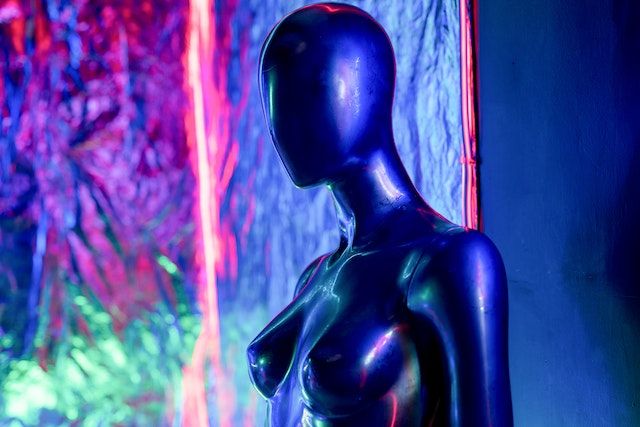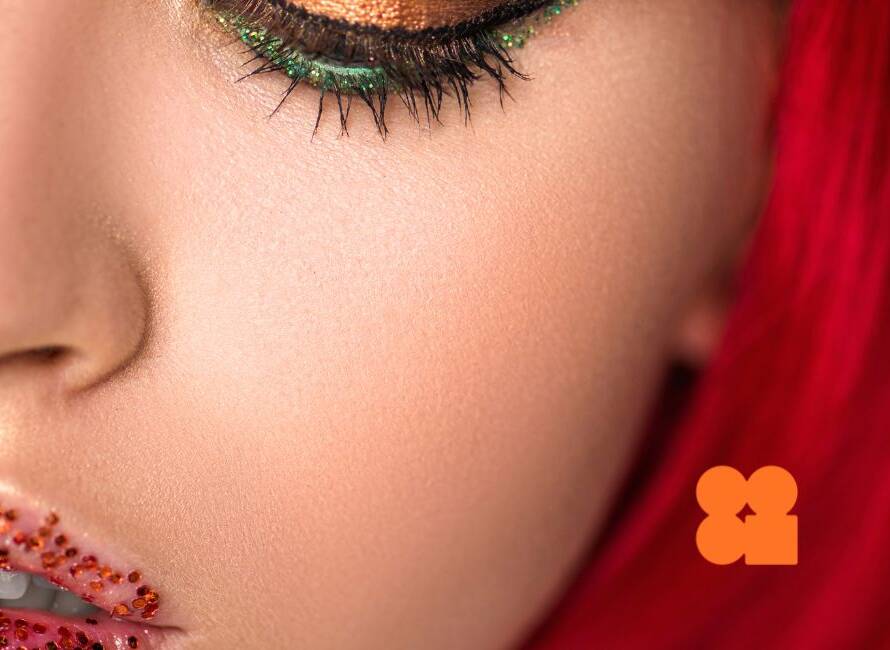What’s popping in the influencer space this week. The highlights, opportunities and challenges for influencers and content creators in the MOOTS platform roundup.
Snap Summary
🤖 Generative AI Enhancements for Instagram by Meta
🎥 TikTok Introduces AI-Powered Creative Assistant for Enhanced Content Creation
🏷️ Introduction of Labels for TikTok AI-Generated Content
🔍 TikTok Explores Partnership with Google to Drive Search Results
📹 Made on YouTube: new tools for Creators
📌 Pinterest’s Personalisation and Recommendation Tools
🔗 LinkTree’s 2023 Creator Report Insights – Link Priority
👥 LinkedIn’s Enhanced Display of Profile CTA Buttons
Generative AI Enhancements for Instagram by Meta
- Meta has announced the integration of generative AI into Instagram.
- A new AI image editing feature called “restyle” allows users to transform their photos based on descriptive prompts like ‘watercolor’ or ‘collage from magazines’.
- “Backdrop” is another AI-powered tool that acts as a green screen, letting users set any background by typing prompts like “put me in front of a sublime aurora borealis”.
- Release dates for “restyle” and “backdrop” haven’t been announced, but they’re anticipated “soon”.
- To avoid confusion, posts using these features will have labels indicating they were generated using AI.
- AI-generated stickers, which can be crafted via text prompts, will be rolled out to Instagram, WhatsApp, Messenger, and Facebook Stories for select English-speaking users in the coming month.
- Mark Zuckerberg has reiterated that generative AI will be a part of every app owned by Meta. In addition, over 25 generative AI chatbots are being launched, some of which are based on real celebrities and creators.
Opportunities: For influencers and content creators, these generative AI tools present an opportunity to craft unique, diverse, and potentially more engaging content without needing extensive design expertise. They can easily experiment with visuals, create fresh aesthetics for their brand, and engage their audience in newer ways.
Challenges: However, as content becomes AI-generated, there’s a challenge in maintaining authenticity. The risk is that audiences might struggle to discern human-made content from AI-made, potentially impacting trust. Also, as AI becomes a common tool, standing out and maintaining originality might become more challenging.
TikTok Introduces AI-Powered Creative Assistant for Enhanced Content Creation
- TikTok launches TikTok Creative Assistant, an AI-driven tool designed to boost the content creation process for its users.
- The tool aims to tackle challenges in creative ideation by offering intelligent support throughout the video creation journey on TikTok.
- Available for users via the TikTok Creative Center by logging into their TikTok for Business account.
- TikTok Creative Assistant is integrated within the TikTok Creative Center, the hub of TikTok’s content ideas.
- For beginners, it provides guidance on TikTok’s creative best practices.
- The assistant showcases and analyses top-performing ads on Creative Center for those researching the TikTok creative landscape.
- It helps overcome writer’s block by brainstorming content ideas and refining TikTok scripts.
- Creative Assistant facilitates continuous ideation, enabling brands and creators to better harness AI for more effective TikTok content creation.
- The tool also offers example prompts, demonstrating its capability to instruct newcomers, provide industry-specific inspiration, brainstorm brand-centric ideas, and draft as well as refine ad scripts.
Opportunities: The TikTok Creative Assistant offers influencers and content creators a valuable resource, enabling them to generate content ideas, refine their approach, and keep up with platform-specific trends efficiently. Especially for those new to TikTok, this tool can be a stepping stone towards understanding the platform’s nuances and generating engaging content.
Challenges: While the tool provides a seamless ideation process, there’s a risk of content becoming homogenised, as many creators might rely heavily on AI-generated ideas. This could pose a challenge for influencers and creators in maintaining their unique voice and differentiating themselves in an increasingly saturated market.
Introduction of Labels for TikTok AI-Generated Content
- TikTok is introducing a new tool to allow creators to label their AI-generated content, promoting transparency in content creation.
- AI offers immense creative potentials, but content generated or modified with AI can potentially mislead viewers.
- The new label allows creators to highlight AI-driven content and is applicable to any content that has been wholly generated or significantly altered using AI.
- This labeling aligns with the TikTok’s Community Guidelines’ synthetic media policy, which covers the labeling of realistic AI-generated imagery, audio, or video.
- Creators can use the new label or other forms of disclosure, such as stickers or captions, to ensure compliance.
- TikTok has announced that educational resources and videos on the use of these labels will be released in the coming weeks.
- Testing will also commence on an “AI-generated” label, which will eventually be automatically applied to identified AI-edited or created content.
- TikTok is renaming its AI effects to clearly incorporate “AI” in the name and relevant effects label. With this, guidelines for Effect House creators have also been updated.
Opportunities: With the introduction of these labels, influencers and content creators can use AI tools without compromising the authenticity of their content, building trust with their audience. With the forthcoming educational resources, creators can be better equipped to effectively and responsibly harness AI for their content creation.
Challenges: The line between human-generated and AI-generated content might become blurry, leading to possible skepticism from audiences. As AI technology continues to evolve rapidly, staying updated and ensuring the correct usage of AI labels may become a consistent challenge for influencers and content creators.
TikTok Explores Partnership with Google to Drive Search Results
- Reports have indicated that younger users are increasingly turning to TikTok for searches, potentially threatening Google’s market share in search.
- Google and TikTok Collaboration: The two giants are reportedly examining a partnership to integrate Google search prompts, and possibly search results, into TikTok’s search stream.
- TikTok confirmed that this is a custom third-party integration for Google and is not an advertising unit.
- Google’s Senior VP, identified TikTok’s growing role in discovery as a business threat, noting that 40% of young individuals use platforms like TikTok or Instagram for searches instead of Google.
- Integrating Google’s tools within TikTok could provide users with broader discovery options and could result in data-sharing benefits, refining both platforms’ discovery tools.
- Google, being investigated for its web search dominance, could face scrutiny over this partnership, especially if there are financial ties. However, it’s not confirmed if such a financial arrangement exists.
- One potential advantage for TikTok could be increased discovery via Google indexing more of its content and displaying more TikTok results in its search.
Opportunities: For influencers, this partnership could amplify their reach, as content could potentially be indexed and discoverable via Google, leading to increased visibility and audience growth. It might also offer an integrated platform experience, allowing influencers to utilise Google’s tools and insights to fine-tune their TikTok content strategies.
Challenges: Influencers may face heightened competition as content becomes more broadly discoverable, making it essential to produce high-quality and unique content. As algorithms evolve with the integration, influencers may need to adapt quickly to ensure their content remains visible and relevant within the platform’s recommendation systems.
Made on YouTube: new tools for Creators
- YouTube Shorts Evolution: Since its 2020 launch, Shorts now has over 70 billion daily views. New tools will make it easier for creators to bring ideas to life on Shorts.
- Dream Screen Feature: An upcoming experimental tool in Shorts allowing creators to generate AI-created video or image backgrounds by typing an idea, enabling more dynamic content creation.
- YouTube Create Mobile App: A free app in beta, designed to simplify video production for Shorts and longer videos. It includes features like precision editing, voiceovers, and access to royalty-free music.
- AI-Powered Insights: YouTube Studio will soon use generative AI to help creators brainstorm video ideas tailored to their channel and audience.
- Assistive Search in Creator Music: An AI-driven tool to help creators find the perfect soundtrack for their content.
- Automatic Dubbing with Aloud: AI-powered tool that will help creators dub their content into multiple languages, broadening their reach.
Opportunities: With YouTube’s AI advancements like Dream Screen and Assistive Search, content creators can produce more innovative and tailored content, potentially attracting wider and more global audiences, especially with the Aloud dubbing tool.
Challenges: While the new tools simplify the creation process, there’s a need for creators to constantly upgrade and adapt to AI technology. With AI suggesting content ideas, there’s a risk of reduced originality or an over-saturation of similar content on the platform.
Pinterest’s Personalisation and Recommendation Tools
- Pinterest is intensifying its emphasis on personalised recommendations using AI and unique buyer intent signals, which have significantly improved engagement.
- Due to improved AI systems, incorporating saves, collages, and item recognition, Pinterest has become a prominent choice for retail advertisers.
- Pinterest’s intent data allows for more relevant AI-driven Pin matches and advertisements. Its AI-driven optimizations have led to a 100x growth in its model size from 2022.
- Video uploads on Pinterest have risen by 170% YoY. The introduction of mobile deep linking for brands has resulted in a 235% increase in conversion rates.
- More users are spending extended time on the app, saving pins, providing Pinterest more data for personalisation. After a decline post-COVID, user growth is back on track.
- Pinterest shared data about its expanding reach, especially among younger users.
Opportunities: The ongoing enhancement of Pinterest’s AI-driven tools presents a chance for content creators and marketers to tap into more personalised and engaged audiences. The platform’s unique intent data can offer marketers a clearer understanding of user wants, enabling more targeted campaigns.
Challenges: While Pinterest is showing promise in its growth and AI strategies, brands and influencers must adapt swiftly to leverage these tools. The massive data influx also poses a challenge for marketers to discern essential insights from the noise. Plus, the platform might not resonate with every brand, requiring a strategic evaluation of its applicability.

